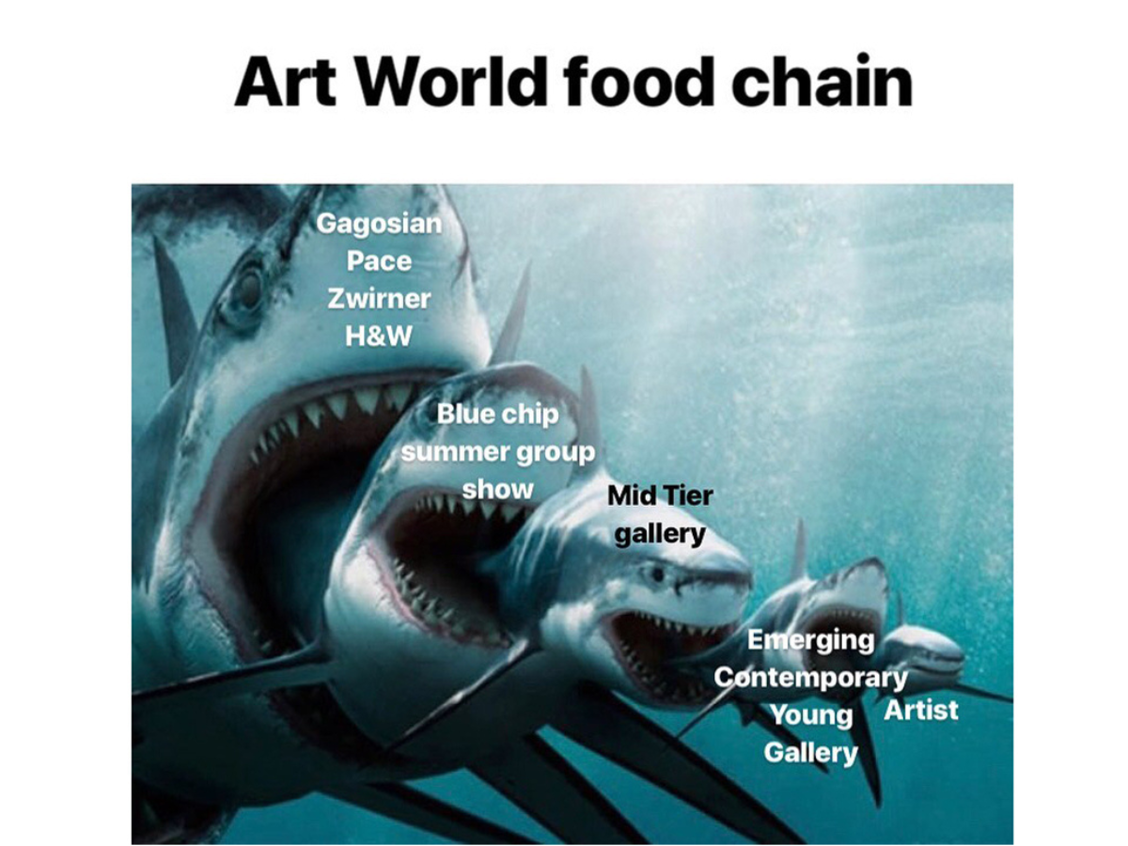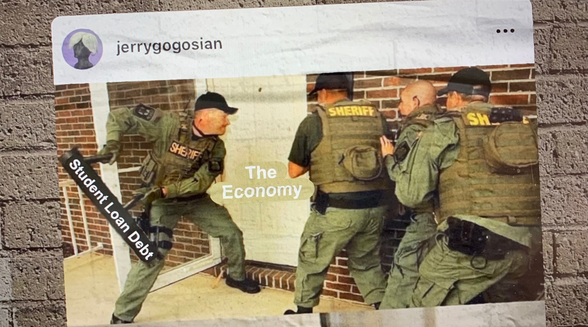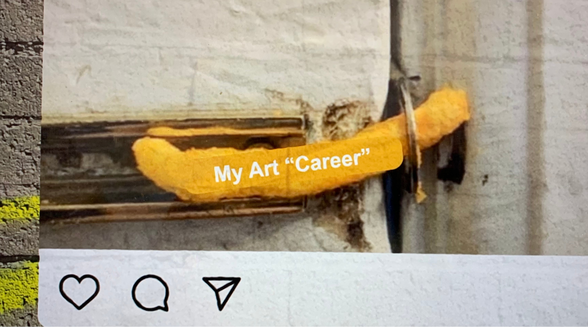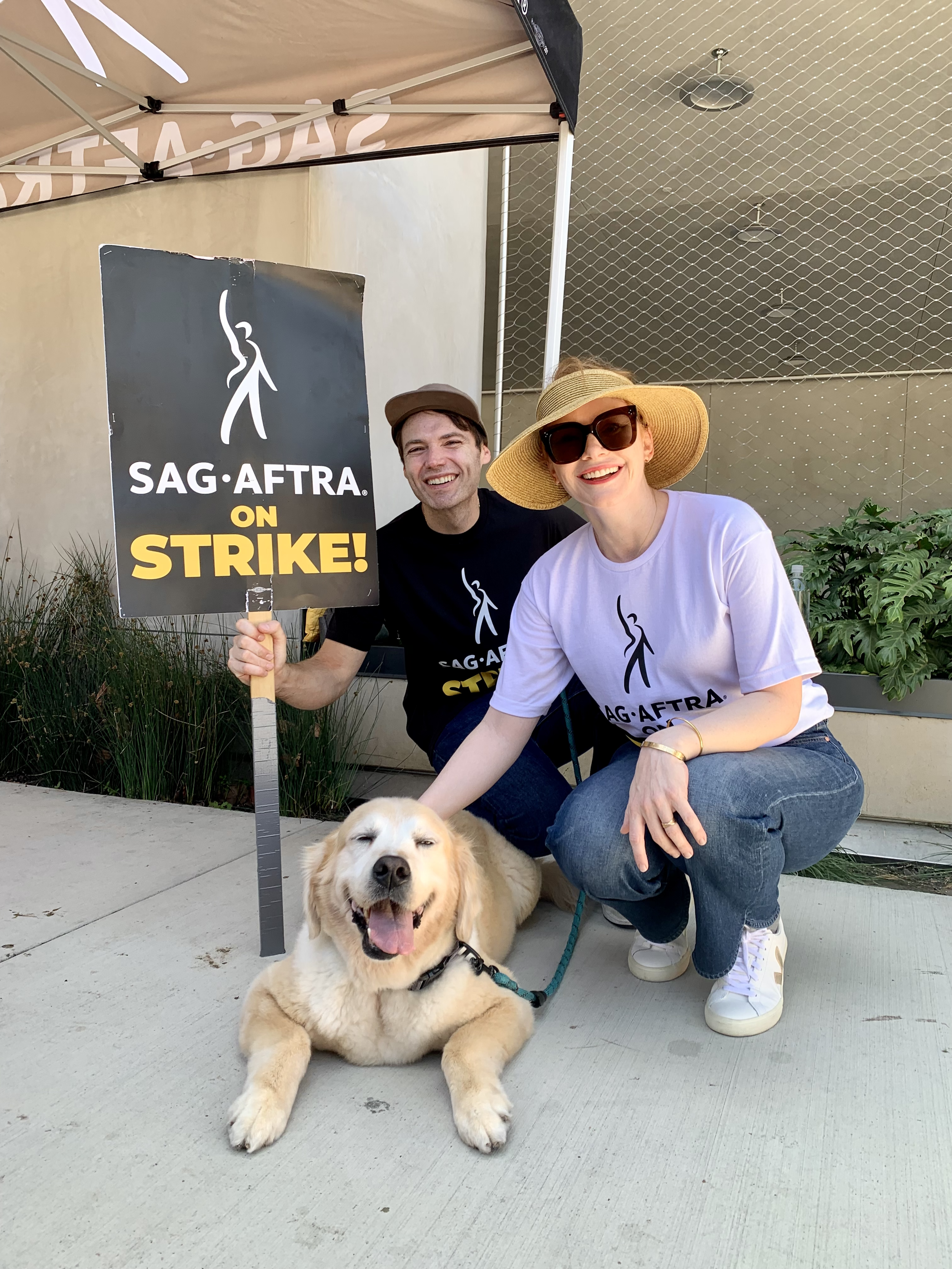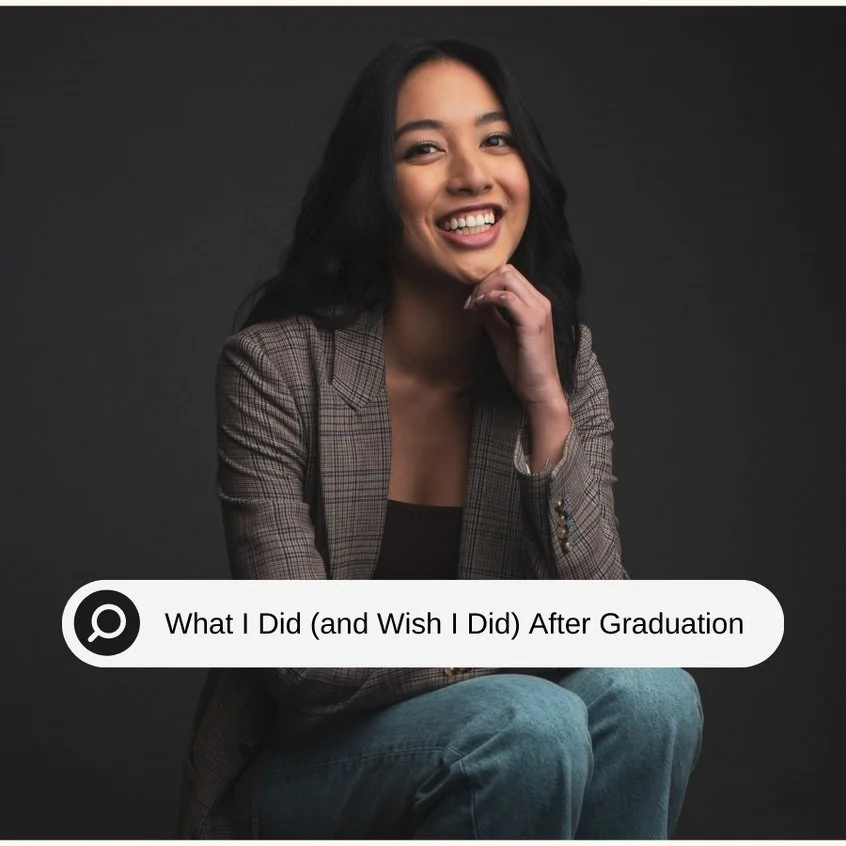If Not Now, When? If Not You, Who?
July 9, 2023
I am currently writing to you all from the East Coast where I traveled last week with the husband, kids, and pets. To pass the time on the flight over, I slept, sketched, read — and then I had my mind blown: I watched a documentary called The Art of Making It.
For me, it felt like I was watching a documentary about the film and television entertainment industry, only with different names and characters. The commodification of art, the Catch-22 of finding an agent, the lack of financial support from governments to artists and art institutions, and the homogeneous group of financiers, patrons, and dealers who seem to be running the business… it all feels very similar.
The documentary also features some hilarious memes from @jerrygogosian like the “Art World food chain” above
We are at such a tipping point in entertainment and art. Streaming has proven to not be profitable. For anyone. Not the studios and definitely not the creatives. We knew this going into it. Streaming in the music industry taught us as much.
One of the most viewed films in early Netflix — when it was essentially a mail-order DVD service — was Francis Ford Coppola’s The Conversation. This trend proved that what had been thought of as a niche audience was actually more robust; it demonstrated an audience's desire to experience art and cinema in the comfort of our homes and how that could lead to profits. At the time this wasn’t a controversial idea, it was an encouraging one.
Capitalism and the creation of art do not make a harmonious combination. Throughout the development of human civilization this has been a constant tension.
The result of that tension is pretty apparent. The mainstream has dominated the marketplace, pushing out creative outliers and anyone who doesn’t fit the description of what is “commercially viable” and “palatable.” The mainstream then steals, waters down and appropriates the work that those same outliers are creating and co-opting it as their own. Historically, it’s very rare that the original creators are invited to have a seat at the table. It’s happened again and again and again and again.
One of the artists in the documentary gave an example of this when she described the regularity with which paintings are purchased and stored in a vault until resale. It seems obvious to say, but the purpose of paintings is to be seen, not simply to be bought and sold. That buy-to-sell cycle is disturbing.
So the inevitable question that arises is: What do we do about it?
There are glimpses of a future sustainable art industry that peeked through The Art of Making It and gave me hope. I saw these glimpses in the curators creating pathways for visibility outside of the agent system, the patrons disrupting the buy-to-sell cycle, and of course, the emerging artists breaking new ground in their work and how they operate within the current systems. Those moments gave me hope.
Another source of hope I’ve seen: there’s a small library near my friends that holds a yearly auction where folks from the area create a postcard-sized piece of art to sell (and all the proceeds go to the library). The twist: no one can sign their name on the front of the artwork. Everyone bids on what they like best without knowing who the artist is — some people who bid will win art that is created by world-renowned painters and others will win art created by their neighbor. As a result, the purpose becomes not about money, trends, or names, but about the creative relationship between giver and receiver, viewer and creator, paper and artist. And it’s precious.
Making a living as a creative — especially when the industry we work in is undergoing a giant correction — can feel unstable to say the least. And yet, within this transformation holds the potential to create new pathways towards a better and more equitable entertainment community. This is a big moment. And often in looking to other creative industries, it holds a mirror up to our own, allowing us to more clearly see the path ahead.
If you haven’t already seen The Art of Making It, I cannot recommend it enough. The documentary features several boundary-breaking visual artists and their work is like a jolt of brilliance. You don’t need to be a visual art aficionado to appreciate it.
p.s. here’s an encouraging wisdom drop I heard from actor and icon Jamie Lee Curtis:
“I turned 60. I realized that the tragedy of my death was not my death but the creativity that I have inside me that didn’t get to come out. And so I woke up at 60 and thought, ‘If not now, when? If not me, who?’ And I’m telling you, from that moment to now, I have a production company, I’ve written a movie, I have four shows in production. [Because] if not now, when?”
I ask the same question of you:)
You May Also Like…
“There’s No Business IN Show Business”
The situation we are in today finds working professionals and artists entrenched in two seemingly opposed realities: there is more opportunity than ever before to create visible work that can make an impact. We have direct access to a global audience. There are more outlets, there are more programs, and there are more jobs. But while there are more slots, drastic changes within the entertainment industry have put sustainable careers for professionals in serious jeopardy.
“Ways to Beat the Sunday Post-Grad Scaries”
Leaving school, especially from an art school/liberal arts program, can be daunting. While a formal education in the arts is enriching, it doesn’t necessarily pave a clear path to employment.
In this newsletter, the wonderful Abby Garcia (former Nine Muses Lab student, and current collaborator) shares her heartfelt advice to fellow recent graduates: how to deal with the post-grad “scaries,” embrace unexpected opportunities, and cultivate personal and professional growth.
Reader Responses:
“Give yourself permission to be creative” by Ethan Hawke
Last week I invited you to share with your fellow readers how you reacted to Ethan Hawke’s TED Talk about owning your creative expression and the immense purpose that this has in our society. I loved so many of your responses (and your theories about why aliens would come to Earth 🤣)! Here are a few highlights:
(Responses have been condensed and lightly edited for clarity.)
From Yvonne C.
“Ethan Hawke's powerful message hit me ‘at the home front!’ I've always been very active with sports, cooking, and dancing but my wonderful Dad's passing 12 years ago was a wake-up call. I had that deep yearning to find a real purpose in my life! His great passion was writing and only then I realized that I've always loved to tell stories. That's when I realized that my late Dad and I share the same passion: storytelling and writing. And it took me another 2 years to find the courage to follow my childhood dream of becoming a screenwriter!”
From Mohamed K.
“Sure [creativity] matters. Because we're all addicted to something that helps us move forward…. That's why we love art. It makes you feel the same the character feels, it makes you go through what she's going through, it merges you together emotionally and creates a bond to see yourself in [and] find yourself in. You celebrate its victory and you taste bitterness of its defeat, through every small and big event ‘til the story ends. That's why I guess we are addicted to art, that's why you said “My job is my hobby,” and that's why I wanted to be a writer.”
From Patti K.G.
“Guilt. It’s a horrible feeling and in some ways can hold us back from doing the things we love. [But today], I have dirty dishes in the sink and I’m gonna sit at the table, get out my paints (and be brave) and NOT feel guilty, because I have a watercolor workshop to prep for!”
From Colleen G.
“Exploring all the opportunities and diving deep into the creative isn't just self healing or selfish, but a gift to all those that can observe and experience the fruits of those chances. I say we delight in artists creating no matter who or where they come from. It’s collective and healing.”
From James H.
“I’ve long felt that art and creativity are essential to humanity and our collective consciousness. I definitely think it is something that would intrigue aliens for a visit or perhaps even convince super-intelligent A.I. to co-exist and in time merge with humanity rather than destroy it.”
Sign up for Bryce’s newsletter and be the first to receive Q&As, behind-the-scenes updates on all things BDH, insider tips for navigating the entertainment industry — and more!
